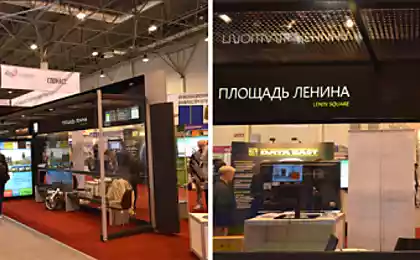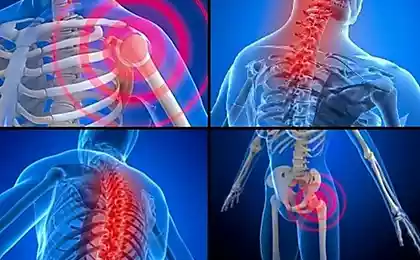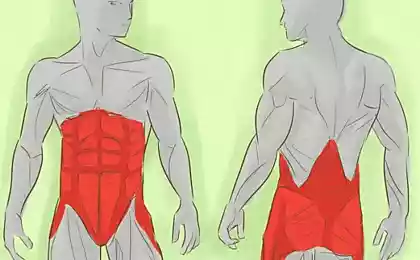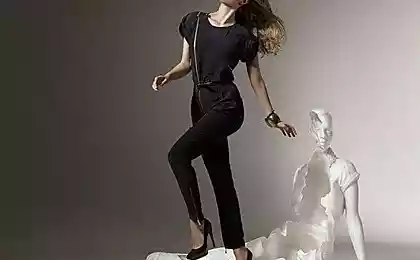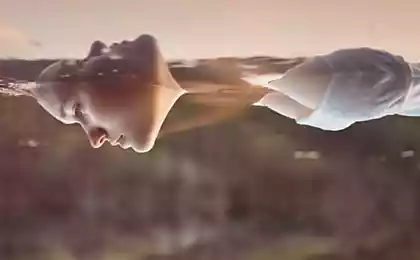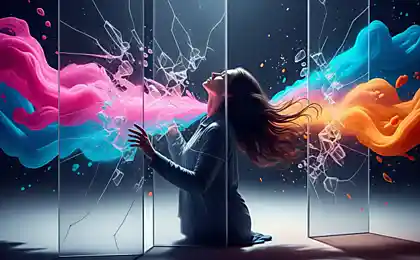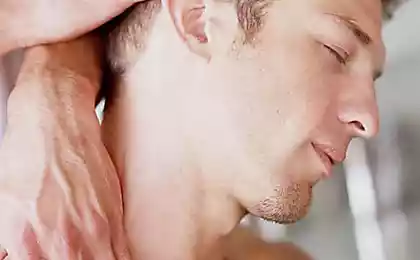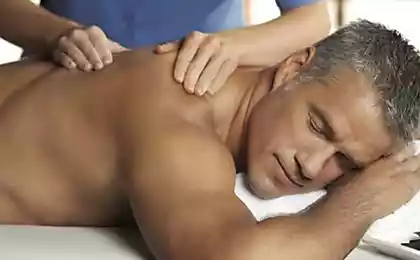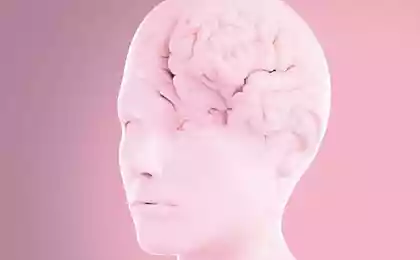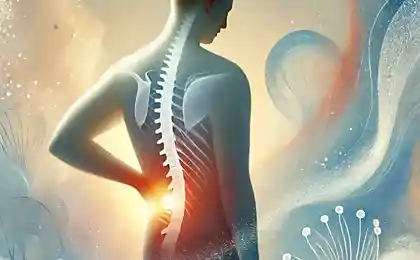518
Seven segments of muscular armor. Emotional pain chart
Guide self-test... Ponder: there is something to ponder? Hence, there is reason to work on them.
Thirty seven million seven hundred sixty six thousand two hundred fifty nine
Muscular armor by Wilhelm Reich.Reich believed that:
— mind and body — a unified whole, each trait has a corresponding physical position;
— character is expressed in the body in the form of muscular rigidity (excessive muscle tension, from lat. rigidus – rigid) or muscle armour;
— chronic stress blocks the energy flow that underlies powerful emotions;
blocked emotions can be expressed and form the so-called SKO (systems of condensed experience — specific clusters of memories with strong emotional charge of the same quality that contain condensed experiences (and related fantasies) from different periods of human life);
— elimination of muscle clamp releases considerable energy, which manifests itself as feelings of heat or cold, tingling, itching, or emotional recovery.
Reich analyzed the posture of the patient and his physical habits, to let him realize how suppressed feelings of life in different parts of the body.
All patients said that the therapy they went through periods of his childhood, when he learned to suppress his hatred, anxiety or love through a combination of actions affecting vegetative functions (control of breathing, tension of the abdominal muscles, etc.).
The reason for strengthening the muscular tension in adults – the constant mental and emotional stress.
Salestraining — the condition of modern man.
Imposed on ideals of material prosperity and comfort, their achievements, focus on the end result, not the life in the present moment — where people are kept in constant tension.
Hence, muscular clamps > spasm of blood vessels > high blood pressure, osteoarthritis, peptic ulcer disease, etc., etc.
All the rest — secondary causes.
The function of shell — protection from pain. However, the body pays for this protection by reducing its ability to pleasure.
Muscular armor is organized in seven main segments, consisting of muscles and organs. These segments are located in the region of the eyes, mouth, neck, chest, diaphragm, belly and pelvis.
Racianska therapy is the blooming of the shell in each segment, starting with the eyes and ending with the pelvis.
Elimination of muscle is achieved through:
* accumulation of energy in the body;
* direct impact on chronic muscle blocks (massage);
* expression of freed emotions, which it identifies;
* spontaneous movement, tantseterapiya, relaxation exercises, yoga, qigong, holotropic breathing etc.
1. Light. Protective shell manifests itself in immobility of the forehead and "empty" expression of the eyes, as if looking for a fixed mask. Dissolving is carried out by opening the eyes as widely as possible to involve the eyelids and the forehead; with exercises for the eyes.
2. Roth. This segment includes the group of muscles of the chin, throat and nape. The jaw may be too compressed and unnaturally relaxed. The segment holds the expression of crying, shouting, anger. Relieve muscle tension by simulating crying, his lips, biting, gramatycznie and massage muscles of the forehead and face.
3. Neck. Includes the deep muscles of the neck and language. Muscle unit holds mostly anger, screaming and crying. Direct impact on the muscles deep in the neck is impossible, therefore, to eliminate muscle clip help shouting, singing, gagging, protruding tongue, tilts and rotation of the head, etc.
4. Thoracic segment: a wide chest muscles, shoulder muscles, shoulder blades, chest and hands. Restrained laughter, sadness, passion. The control of breathing is a means of suppressing any emotion. Shell blossoms of humanity, especially the implementation of a full exhalation.
5. Aperture. This segment includes the diaphragm, the solar plexus, internal organs, muscles of the vertebrae at this level. The shell is expressed in vignette spine. Exhalation is more difficult breaths (as in bronchial asthma). The muscle unit that maintains a strong anger. Need largely to dismiss the first four segments before moving to blooming.
6. Stomach. The abdominal muscles and back muscles. Strain of lumbar muscles associated with fear of attack. Muscle clamps on the sides associated with the suppression of anger, hostility. The blooming of the shell in this segment is relatively easy, if the upper segments are already open.
7. Pelvis. The last segment includes all the muscles of the pelvis and lower extremities. The stronger the spasm of the muscles, especially the pelvis is pulled back. The gluteal muscles are tense and painful. The pelvic shell is to suppress arousal, anger, pleasure.
Belt Reich — 7 segments of muscular armor.Forty one million one hundred seventy two thousand three hundred forty two
The neck area
The neck is a very important area, a kind of barrier, and the bridge between the conscious (mind) and the unconscious (body). Rationality peculiar to the Western culture, sometimes makes us over-reliant on their own mind. According to the American research studying how people perceive their body (called "body image"), head size in the internal representation takes on average 40-60% of the size of the body (while objectively, anatomically – about 12%). This "bias" is caused by excess mental activity, the ongoing "mental chatter", which gives the feeling that my head is full and it is impossible to recover or relax. Thus generated by the head texts "do not reach" to the body, and the body is simply ignored by consciousness – "the individual" kind of "Professor Dowell's head". In this case it is important to focus the client's attention on the signals given by the body to thoughts associated with the sensations.
There is a reverse version of the "cervical barrier": the sensations in the body are, and bright enough, but they are not interpreted, do not overlook the level of awareness. For this situation, there are different pain of psychosomatic origin, paresthesia, etc., the reasons for which people do not understand.
Throat area
Is localized in the region of the jugular notch and is associated with the blockage of emotions. Here reflect the problems of interaction with other people (communication) or with oneself (authenticity). Such a block can occur if a person gets into a situation when it is impossible to admit himself in some unpleasant truth or to do something that threatens to upset his identity ("if I do – it won't be me"). Also in this area reflects the inability of the ban on the realization of some important truths (i.e. the ban on uttering the meaningful text or prohibition of certain actions: "if I say/do, it won't be me"). Long-existing problems in this area threaten the development of thyroid diseases, asthma, bronchopulmonary disorders.
The middle of the sternum
This area is located behind the protruding bone of the sternum, below the jugular notch, and it is localized area of resentment. Subjective feelings here may be perceived as a lump, ball, clot, "stone heart". When this does occur, the channel congestion of the pericardium, there are a heart disorder. For a person with such a problem characterized by the specific expression – expressed nasolabial folds, drooping corners of her mouth – it all added up in a mask of distrust world of hurt.
The center of the chest
According to the Eastern tradition, in the middle of the chest at heart level is the heart chakra, anahata is the center of love and emotional openness to the world. If in life there was no love, there is a different underlying feeling – longing, which causes pulling, sucking sensation in this area. Customers can also describe it as presence, a hard, compressed, cold, dark "substance." The defeat of this zone, usually associated with large-scale psychological trauma received in childhood, — first of all, with coldness of parents, child desertion, etc.
Diaphragmatic area
Captures the area of diaphragmatic muscle and the epigastric region. In body-oriented therapy, this area is associated with a lock, a ban on any expression of emotion – both good and bad. Also here rooted fears of financial distress and social maladjustment. When working with this area can be felt even when embroiled surround the abdomen. The tension here is like the feeling after hitting "below the belt" — the breath becomes less deep, "frozen" emotions, crying, laughing. Protective reaction of the organism to the formation of the clip (which will lead to stagnation of blood, lymph, etc.) often is the formation of fat cushions. Also there are often psychosomatic stomach ulcers, liver problems (in China, the liver was considered the source of anger), and gall bladder. Clip in diaphragmatic area is typical of people who seek to control everything, to keep. They are typically such turns of phrase as "I can't imagine this allow", "for all the pleasure you have to pay," etc. such people tend to constantly discuss what is happening, generate a mental construction, to see life through the prism of the schemes.
The umbilical area
This is the fear zone, which corresponds to the so-called "belt of the Reich", which includes the projection of the kidneys. The Chinese call the kidneys the "graveyard of emotions" and the source of cold. After working in this area (and is used here for a long "push" motion), the client may experience a redistribution of cold on the body.
Pelvic clamp
From behind it's rump, the buttocks, the crests of the iliac bones, the front – lower abdomen and inner thighs. Reich linked the pelvic clamp with a blocked sexuality. If as a result of sexual life is a deep discharge, giving a sense of integrity, then there is a profound spasticity, fat, congestion in the pelvic area. In the presence of a pelvic clamp a technique of working with body fat inconclusive, since, as already mentioned, they are formed as a protective reaction of the organism.
Source: life-up.ru/biblioteka/zametki/grafik-emotsionalnoy-boli/
Thirty seven million seven hundred sixty six thousand two hundred fifty nine
Muscular armor by Wilhelm Reich.Reich believed that:
— mind and body — a unified whole, each trait has a corresponding physical position;
— character is expressed in the body in the form of muscular rigidity (excessive muscle tension, from lat. rigidus – rigid) or muscle armour;
— chronic stress blocks the energy flow that underlies powerful emotions;
blocked emotions can be expressed and form the so-called SKO (systems of condensed experience — specific clusters of memories with strong emotional charge of the same quality that contain condensed experiences (and related fantasies) from different periods of human life);
— elimination of muscle clamp releases considerable energy, which manifests itself as feelings of heat or cold, tingling, itching, or emotional recovery.
Reich analyzed the posture of the patient and his physical habits, to let him realize how suppressed feelings of life in different parts of the body.
All patients said that the therapy they went through periods of his childhood, when he learned to suppress his hatred, anxiety or love through a combination of actions affecting vegetative functions (control of breathing, tension of the abdominal muscles, etc.).
The reason for strengthening the muscular tension in adults – the constant mental and emotional stress.
Salestraining — the condition of modern man.
Imposed on ideals of material prosperity and comfort, their achievements, focus on the end result, not the life in the present moment — where people are kept in constant tension.
Hence, muscular clamps > spasm of blood vessels > high blood pressure, osteoarthritis, peptic ulcer disease, etc., etc.
All the rest — secondary causes.
The function of shell — protection from pain. However, the body pays for this protection by reducing its ability to pleasure.
Muscular armor is organized in seven main segments, consisting of muscles and organs. These segments are located in the region of the eyes, mouth, neck, chest, diaphragm, belly and pelvis.
Racianska therapy is the blooming of the shell in each segment, starting with the eyes and ending with the pelvis.
Elimination of muscle is achieved through:
* accumulation of energy in the body;
* direct impact on chronic muscle blocks (massage);
* expression of freed emotions, which it identifies;
* spontaneous movement, tantseterapiya, relaxation exercises, yoga, qigong, holotropic breathing etc.
1. Light. Protective shell manifests itself in immobility of the forehead and "empty" expression of the eyes, as if looking for a fixed mask. Dissolving is carried out by opening the eyes as widely as possible to involve the eyelids and the forehead; with exercises for the eyes.
2. Roth. This segment includes the group of muscles of the chin, throat and nape. The jaw may be too compressed and unnaturally relaxed. The segment holds the expression of crying, shouting, anger. Relieve muscle tension by simulating crying, his lips, biting, gramatycznie and massage muscles of the forehead and face.
3. Neck. Includes the deep muscles of the neck and language. Muscle unit holds mostly anger, screaming and crying. Direct impact on the muscles deep in the neck is impossible, therefore, to eliminate muscle clip help shouting, singing, gagging, protruding tongue, tilts and rotation of the head, etc.
4. Thoracic segment: a wide chest muscles, shoulder muscles, shoulder blades, chest and hands. Restrained laughter, sadness, passion. The control of breathing is a means of suppressing any emotion. Shell blossoms of humanity, especially the implementation of a full exhalation.
5. Aperture. This segment includes the diaphragm, the solar plexus, internal organs, muscles of the vertebrae at this level. The shell is expressed in vignette spine. Exhalation is more difficult breaths (as in bronchial asthma). The muscle unit that maintains a strong anger. Need largely to dismiss the first four segments before moving to blooming.
6. Stomach. The abdominal muscles and back muscles. Strain of lumbar muscles associated with fear of attack. Muscle clamps on the sides associated with the suppression of anger, hostility. The blooming of the shell in this segment is relatively easy, if the upper segments are already open.
7. Pelvis. The last segment includes all the muscles of the pelvis and lower extremities. The stronger the spasm of the muscles, especially the pelvis is pulled back. The gluteal muscles are tense and painful. The pelvic shell is to suppress arousal, anger, pleasure.
Belt Reich — 7 segments of muscular armor.Forty one million one hundred seventy two thousand three hundred forty two
The neck area
The neck is a very important area, a kind of barrier, and the bridge between the conscious (mind) and the unconscious (body). Rationality peculiar to the Western culture, sometimes makes us over-reliant on their own mind. According to the American research studying how people perceive their body (called "body image"), head size in the internal representation takes on average 40-60% of the size of the body (while objectively, anatomically – about 12%). This "bias" is caused by excess mental activity, the ongoing "mental chatter", which gives the feeling that my head is full and it is impossible to recover or relax. Thus generated by the head texts "do not reach" to the body, and the body is simply ignored by consciousness – "the individual" kind of "Professor Dowell's head". In this case it is important to focus the client's attention on the signals given by the body to thoughts associated with the sensations.
There is a reverse version of the "cervical barrier": the sensations in the body are, and bright enough, but they are not interpreted, do not overlook the level of awareness. For this situation, there are different pain of psychosomatic origin, paresthesia, etc., the reasons for which people do not understand.
Throat area
Is localized in the region of the jugular notch and is associated with the blockage of emotions. Here reflect the problems of interaction with other people (communication) or with oneself (authenticity). Such a block can occur if a person gets into a situation when it is impossible to admit himself in some unpleasant truth or to do something that threatens to upset his identity ("if I do – it won't be me"). Also in this area reflects the inability of the ban on the realization of some important truths (i.e. the ban on uttering the meaningful text or prohibition of certain actions: "if I say/do, it won't be me"). Long-existing problems in this area threaten the development of thyroid diseases, asthma, bronchopulmonary disorders.
The middle of the sternum
This area is located behind the protruding bone of the sternum, below the jugular notch, and it is localized area of resentment. Subjective feelings here may be perceived as a lump, ball, clot, "stone heart". When this does occur, the channel congestion of the pericardium, there are a heart disorder. For a person with such a problem characterized by the specific expression – expressed nasolabial folds, drooping corners of her mouth – it all added up in a mask of distrust world of hurt.
The center of the chest
According to the Eastern tradition, in the middle of the chest at heart level is the heart chakra, anahata is the center of love and emotional openness to the world. If in life there was no love, there is a different underlying feeling – longing, which causes pulling, sucking sensation in this area. Customers can also describe it as presence, a hard, compressed, cold, dark "substance." The defeat of this zone, usually associated with large-scale psychological trauma received in childhood, — first of all, with coldness of parents, child desertion, etc.
Diaphragmatic area
Captures the area of diaphragmatic muscle and the epigastric region. In body-oriented therapy, this area is associated with a lock, a ban on any expression of emotion – both good and bad. Also here rooted fears of financial distress and social maladjustment. When working with this area can be felt even when embroiled surround the abdomen. The tension here is like the feeling after hitting "below the belt" — the breath becomes less deep, "frozen" emotions, crying, laughing. Protective reaction of the organism to the formation of the clip (which will lead to stagnation of blood, lymph, etc.) often is the formation of fat cushions. Also there are often psychosomatic stomach ulcers, liver problems (in China, the liver was considered the source of anger), and gall bladder. Clip in diaphragmatic area is typical of people who seek to control everything, to keep. They are typically such turns of phrase as "I can't imagine this allow", "for all the pleasure you have to pay," etc. such people tend to constantly discuss what is happening, generate a mental construction, to see life through the prism of the schemes.
The umbilical area
This is the fear zone, which corresponds to the so-called "belt of the Reich", which includes the projection of the kidneys. The Chinese call the kidneys the "graveyard of emotions" and the source of cold. After working in this area (and is used here for a long "push" motion), the client may experience a redistribution of cold on the body.
Pelvic clamp
From behind it's rump, the buttocks, the crests of the iliac bones, the front – lower abdomen and inner thighs. Reich linked the pelvic clamp with a blocked sexuality. If as a result of sexual life is a deep discharge, giving a sense of integrity, then there is a profound spasticity, fat, congestion in the pelvic area. In the presence of a pelvic clamp a technique of working with body fat inconclusive, since, as already mentioned, they are formed as a protective reaction of the organism.
- The frontal clip – (helmet bipolar), with constant, prolonged stress, General fatigue.
- Jaw clip compressed jaws (aggression).
- Neck area – digitalnet – concentration of feelings, the ambivalence of > duality.
- Chest clip – Bronchitis, asthma, a zone of conflict between want and need. The middle of the chest area of resentment.
- Diaphragmatic clip to block emotion (keeps everything in, the area of psychosis).
- The fear zone Fear affects the kidneys and bladder.
- Pelvic clampm – the abdomen, the gluteal muscle. published
P. S. And remember, only by changing their consumption — together we change the world! © Join us at Facebook , Vkontakte, Odnoklassniki
Source: life-up.ru/biblioteka/zametki/grafik-emotsionalnoy-boli/
Pkhali of broccoli. It is very tasty!
The mystery of successful people: they have 24 hours more than a week


